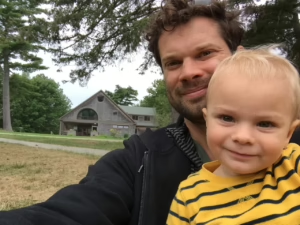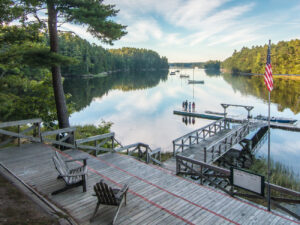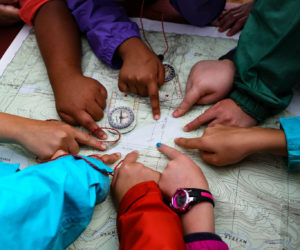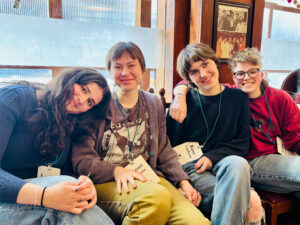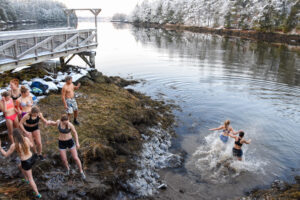This past week, the students here at Chewonki have been focusing on something a little different than the regular class schedule: Human Ecology Capstones. Each student has chosen a completely different focus for this week to expand upon in a project that can literally be anything one’s imagination can illustrate. Some are doing surveys relating to food ethics, some are building objects and contraptions in the woodshop, one is even making a sweat lodge. I, on the other hand, wanted to do something fully experiential, while relating to the forest we are surrounded by every day on the neck.
I chose to chop down a tree, cut it into sections, and split those sections into firewood using the old ways of logging. This includes using tools like an ax, a bow saw, and a cross-cut saw rather than a chainsaw. Although it took much deliberation, using this project felt right to me. This was partially due to the fact that it just sounded incredibly fun to me, but more to my grandfather, one of my most influential role models. He cleared out much of the forest around his mountain home in North Carolina using these methods, and felt an attachment to nature greater than anybody else I have ever met. I hoped that by employing these methods, I could feel that same connection to the natural world as he did.
Although this whole project has been extremely difficult, there was one moment in particular that presented the most challenge to me: cutting the tree down. In order to fell the tree, I first had to make a deep face cut facing the direction I wanted the tree to fall, and then cut in on the opposite side of the tree using a bow saw. Having had very little practice using either of these tools, I was nervous that I would be able to fell the tree at all, let alone in the direction I wanted it to.
https://youtu.be/hxoYL4_OZsg
I swung in with the ax for the first chop of the face cut and my aim was way off. It did not improve with the next few swings either. After these precursory cuts my swings became much more accurate and impactful, and before I knew it, chunks of tree were chipping off left and right. Once I made my way about halfway into the trunk, I picked up the bow saw and began into the back cut from the opposite side. This was possibly the most difficult portion of the process because a bow saw is by no means the correct tool for cutting a tree down, and was pinched and bent by the weight of the tree. However, after exerting intense effort, the tree finally began to move. I made one last exhausting endeavor to push the tree over its hinge and fell it. Once it leaned a little bit, I hurried out of the danger zone and turned around to see it fall. I watched in awe as the thirty-five foot monster fell, due to no more than my own hard work. It was a magical experience, but not because of an acquired sense of dominance over nature. Quite the opposite in fact. The sensation I felt in that moment where the tree hit the ground was not one of superiority, but equality. I had rarely felt such a deep connection with nature, in fact, I knew that I was merely borrowing something from it to feed my survival and the survival of the Chewonki community. I could not help but smile. The satisfaction I felt in that moment was nearly incomparable, for I had done exactly what I set out to do with my project. I had not only cut down a tree using the old ways of logging, but I had performed the precise actions my grandfather had so many times before, and, through this, connected with the natural world in a way I never had.
-Clyde Mulroney, Crossroads School, CA

